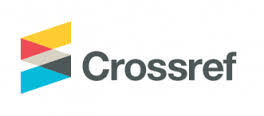Predictive Ability of Digital Narcissism on Social Media in Machiavellianism Personality among a Sample of Al al-Bayt University Students
DOI:
https://doi.org/10.59759/educational.v4i2.882Keywords:
Digital Narcissism, Machiavellianism personality, Al al-Bayt University StudentsAbstract
This study aimed to determine the level of digital narcissism on social networking sites, the level of Machiavellian personality among Jordanian university students, and the degree of the relative contribution of digital narcissism on social networking sites to Machiavellian personality among Jordanian university students. The study sample consisted of (368) male and female students (53 males, 315 females) selected by convenience sampling. To achieve the objectives of the study, the researchers used the Digital Narcissism on Social Media Scale by Akdeniz and colleagues (Akdeniz et al., 2022) and the Abbreviated Machiavellianism Scale by Tianwei and colleagues (Tianwei et al., 2021) after checking for validity and reliability. The results of the study indicated that the total level of digital narcissism was (medium), and for the dimensions, the level of (narcissistic admiration) came at the medium level, while the dimension of (narcissistic competition) came at the low level, and the total level of Machiavellian personality was also (medium), and for the dimensions, the level of the (efficacy) dimension came at the high level, while the level of the (planning and hostility) dimensions came at the medium level. The results of the study showed the ability of digital narcissism on social networking sites to predict Machiavellian personality; they explained (14.2%) of Machiavellian personality, and the predictor variables explained (10.1%) of the (competitiveness) dimension. The predictor variables explained 2.8% of the Narcissistic Competition dimension; the predictor variables explained 2.8% of the Narcissistic Admiration dimension; and the predictor variables explained 1.3% of (number of hours of social media use per day); and the predictor variables explained 1.3% of (number of hours of social media use per day).
Keywords: Digital Narcissism, Machiavellianism personality, Students at Jordanian Universities.
Downloads
References
Ackerman, R., Witt, E., Donnellan, M., Trzesniewski, K., Robins, R., & Kashy, D. (2011). What Does the Narcissistic Personality Inventory Really Measure?. Assessment 18(1) 67–87.
Akdeniz, S., Budak, H., & Ahçı, Z. (2022). Development of a Scale of Narcissism in Social Media and Investigation of Its Psychometric Characteristics. International Education Studies; Vol. 15, No. 1;
https://doi.org/10.5539/ies.v15n1p200
American Psychiatric Association. (2013). Diagnostic and Statistical Manual of Mental Disorders. Fourth Edition, Text Revision (DSM-IV-TR) Washington, DC: Author
Anderson, J., & Cheers, C. (2017). Does the Dark Triad Predict Prejudice?: The Role of Machiavellianism, Psychopathy, and Narcissism in Explaining Negativity Toward Asylum Seekers. Australian Psychologist, 53(3), 271–281
Austin, E.J., Farrelly, D., Black, C. & Moore, H. (2007). Emotional intelligence, Machiavellianism and emotional manipulation: Does EI have a dark side? Personality and Individual Differences, 43, 179-189.
Bereczkei, T. (2017). Machiavellianism: The psychology of manipulation. Rutledge.
Blumstein, P.W. (1973). Machiavellianism and Tactics of Identity Bargaining. Sociometry, 36(3), 346-365.
Brewer, G., Abell, L., & Lyons, M. (2014). Machiavellianism, Competition and Self-Disclosure in Friendship. Individual Differences Research. In Press.
Brydon, D. (2010). Social Media's Research Potential. English Studies in Canada, 36(4), 4, 22.
Carpenter, C. J. (2012). Narcissism on Facebook: Self-promotional and anti-social behavior. Personality and Individual Differences, 52(4), 482–486.
Carusi, M. (2020). Narcissism and Social-Media. How social-media use can impact perceived stress on Facebook academic motivation. Studia Doctoralia. Psychology and Educational Science, 11(2), 110-120.
Christie, R., & Geis, F. L. (1970). Studies in Machiavellianism. London: Academic Press.
Collison, K. L., Vize, C. E., Miller, J. D., & Lynam, D. R. (2018). Development and preliminary validation of a five factor model measure of Machiavellianism. Psychological Assessment, 30(10), 1401–1407. Keen, A. (2006).Digital vertigo: How today's online social revolution is dividing, diminishing, and disorienting us. New York: St. Martin's Press.
Dahling, J. J., Whitaker, B. G., & Levy, P. E. (2009). The development and validation of a new Machiavellianism scale. Journal of management, 35(2), 219-257.
Dogra, S. (2023). Digital Narcissism and Social Media: an Analysis. Purva Mimaansa, 14, 1-7.
Ehrlich, K. B., Dykas, M. J., & Cassidy, J. (2012). Tipping points in adolescent adjustment: predicting social functioning from adolescents' conflict with par and friends. Journal of Family Psychology, 26(5), 776-792.
Fan, C. Y., Chu, X. W., Zhang, M., & Zhou, Z. K. (2019). Are narcissists more likely to be involved in cyberbullying? Examining the mediating role of self-esteem. Journal of interpersonal violence, 34(15), 3127-3150.
Fan, W., Geng, Y., Gao, Y., Gao, Q., & Liu, Y. (2025). Can individuals accurately identify high Machiavellians as low cooperative based on facial appearance? The moderating role of target gender and raters' Machiavellianism. Personality and Individual Differences, 233, 112880
Furnham, A., Richards, S. C., & Paulhus, D. L. (2013). The Dark Triad of personality: A 10 year review. Social and Personality Psychology Compass, 7, 199–216.
Gentile, B., Miller, J. D., Hoffman, B. J., Reidy, D. E., Zeichner, A., & Campbell, W. K. (2013). A test of two brief measures of grandiose narcissism: The Narcissistic Personality Inventory–13 and the Narcissistic Personality Inventory-16. Psychological assessment, 25(4), 1120.
Gupta, M. D. (1986). Effects of age and family structure on machiavellianism. Indian Journal of Current Psychological Research.
Gylfason, H. F., Sveinsdottir, A. H., Vésteinsdóttir, V., & Sigurvinsdottir, R. (2021). Haters gonna hate, trolls gonna troll: The personality profile of a Facebook troll. International journal of environmental research and public health, 18(11), 5722.
Hattie, J. (1985). Methodology Review: Assessing Unidimensionality of Tests and Items. Applied Psychological Measurement, 9,(2) 139-164.
Havey, A. & Puccio, D. (2016). Sex, likes and social media: Talking to our teens in the digital age. London: Vermillion.
Hussain, A., Khan, H., AJaml, I., & Akhtar, Y. (2023b). Relationship of Narcissism, Machiavellianism, and Psychopathy Personality Traits with Social Media Addiction among Adults: Gender and Marital Status are in Focus. Journal of Social Sciences Review, 3(2), 1012-1021.
Hussain, A., Khan, H., Ajmal, I., & Akhtar, Y. (2023a). Climate Change and Food Security in Selected Developing Countries: Panel Data Analysis. Journal of Social Sciences Review, 3(2), 1012- 1021.
Jabeen, F., Gerritsen, C., & Treur, J. (2020). Narcissism and fame: a complex network model for the adaptive interaction of digital narcissism and online popularity. Applied Network Science, 5(1).
Jacobson, S. (2015). What is Machiavellianies in psychology. Retrievest Jan 8, 2021 from: https://www.harleytherapy.co.uk/counselling machiavellianism psychology.htm
Jonason, P. K., & Schmitt, D. P. (2010). What have you done for me lately?: Friendship-selection in the shadows of the Dark Triad traits. Evolutionary Psychology, 10, 400-421
Jones, D. N., & Paulhus, D. L. (2009). Machiavellianism. In M. R. Leary & R. H. Hoyle (Eds.), Handbook of individual differences in social behavior (pp. 93–108). New York, NY: Guilford Press
Kananifar, N., Muhamad, H., & Zarkesh, N. (2019). An evaluation of mental health based on the big five personality traits and machiavellianism in domestic and international students in Malaysia. Scholars Bulletin, 9771(6), 192-201.
Kubarych, T. S., Deary, I. J., & Austin, E. J. (2004). The Narcissistic Personality Inventory: factor structure in a non-clinical sample. Personality and Individual Differences, 36(4), 857–872.
Marshall, T. C., Lefringhausen, K., & Ferenczi, N. (2015). The Big Five, self-esteem, and narcissism as predictors of the topics people write about in Facebook status updates. Personality and Individual Differences, 85, 35–40.
McHoskey, J. W. (2001). Machiavellianism and personality dysfunction. Personality Individual Differences, 31(5), 791-798.
Mededovic, J., & Vujičić, N. (2022). How dark is the personality of murderers? Psychopathy, Machiavellianism, and sadism in homicide offenders. Personality Differences, 197, 111-122.
Miles, G., Smyrnios, K., Jackson, M., & Francis, A. (2019). Reward-punishment sensitivity bias predicts narcissism subtypes: Implications for the etiology of narcissistic personalities. Personality and Individual Differences 141(15), 143-151
Musarrat, R., Ahmed, S., Munir, F., Riaz, S., & Hayat, N. (2022). Digital Narcissism, Self-Esteem And Self-Objectification Among Snapchat Vs. Facebook Users. Journal of Positive School Psychology, 6(9), 3128-3141
Rauthmann, J.F. (2011). Acquisitive or protective self-presentation of dark personalities? Associations among the dark triad and self-monitoring. Personality and Individual Differences, 51, 502-508.
Ryan, T., & Xenos, S. (2011). Who uses Facebook? An investigation into the relationship between the Big Five, shyness, narcissism, loneliness, and Facebook usage. Computers in human behavior, 27(5), 1658-1664.
Sheldon, P., & Bryant, K. (2016). Instagram: Motives for its use and relationship to narcissism and contextual age. Computers in human Behavior, 58, 89-97.
Singh, S., & Verma, M. (2021). Social Media Narcissism: A Sociological Perspective. International Journal of Arts & Education Research, 11(1) 2278-9677.
Tianwei V. Du, Katherine L. Collison, Colin Vize, Joshua D. Miller & Donald R. Lynam (2021): Development and Validation of the Super-Short Form of the Five Factor Machiavellianism Inventory (FFMI-SSF), Journal of Personality Assessment, https://doi.org/10.1080/00223891.2021.1878525
Vecchio, R. P., & Sussman, M. (1991). Choice of influence tactics: Individual and organizational determinants. Journal of Organizational Behavior, 12, 73-80.
Walther, J. B., Van Der Heide, B., Kim, S. Y., Westerman, D., & Tong, S. T. (2008). The role of friends’ appearance and behavior on evaluations of individuals on Facebook: Are we known by the company we keep?. Human communication research, 34(1), 28-49.
Wastell, C., & Booth, A. (2003). Machiavellianism: An alexithymic perspective. Journal of Social and Clinical Psychology, 22, 730-744.
Williams, A. L., & Merten, M. J. (2008). A review of online social networking profiles by adolescents: Implications for future research and intervention. Adolescence, 43, 253–274.
Wilson, D. S., Near, D. C., & Miller, R. R. (1998). Individual differences in Machiavellianism as a mix of cooperative and exploitative strategies. Evolution and Human Behavior, 19, 203-212.
Wilson, D. S., Near, D., & Miller, R. R. (1996). Machiavellianism: A synthesis of the evolutionary and psychological literatures. Psychological bulletin, 119(2), 285.
Wolff, C., & Wetzel, E. (2023). The Development of Machiavellianism, Psychopathy, and Narcissism in Young Adulthood. Collabra: Psychology, 9(1), 1-32.


